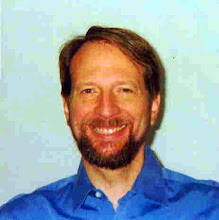Last weekend I attended a workshop for Alexander Technique teachers led by Rosa Luisa Rossi. I've typed up most of my notes, and here I've pulled out a few quotes, partial quotes, etc.; phrases that stood out. While I'd like to organize it into a well-crafted essay, that could take another week! This should interest anyone with some experience of the Alexander Technique, and anyone with curiosity.
main ideas:
using an accepting touch
working with curiosity with my students.
working on inhibition of the "neuroset" rather than the action.
R.L.'s Alexander story: "How can I be with myself in this way?"
"our greatest gift as humans is the ability to constructively and consciously control the way we use our whole selves, mind, body and spirit. This way we use ourselves is a constant influence in all areas of life." This is a paraphrase of a sentence using the titles of FM Alexander's 4 books:
"Man's Supreme Inheritance (1918), Constructive Conscious Control of the Individual (1923), The Use of the Self (1932), and The Universal Constant in Living (1941)
Body-oriented awareness in action.
"you just wish to be quiet throughout" (quote from Margaret Goldie, "Miss Goldie") -so the right thing can happen - the whole organization can happen.
hands-on: quality where person feels ACCEPTED.
QUALITY OF TOUCH THAT DOESN'T DEMAND ANYTHING.
FREEDOM TO CHOOSE - don't impose it.
SELF:
1. I EXIST
2. EXIST - TANGIBLY IN MY BODY
3. THEN IN SPACE
4. CURIOSITY
guide people into constructive conscious choice
Learning through INSIGHT
INHIBITING - THE ACTION?
NO, THE NEUROSET
*neuroset is a pattern of brain activity used in formulating and triggering present action plans, in light of specific situations. experiments have shown that sets influence actions in general; and habits of movement, ideas, and feelings
CONTINUE, WHILE
"I EXIST
IN BODY,
IN SPACE,
W/CURIOSITY
AN ACCEPTING TOUCH CAN CHANGE A PERSON'S BODY MAP ["this is here, that is there, this can move this way, this can be like this" -DJ]
("Body work"?) no, AT is BODY-ORIENTED AWARENESS IN ACTION
AWARENESS IN ACTION, EMBODIED
SATISFACTION:
LEARN WITHHOLDING CONSENT-STIMULATES SATISFACTION HORMONE.
"A MOVEMENT THAT WANTS TO BE ALLOWED"
FOLLOWING MOVEMENT THAT WANTS TO HAPPEN.
UNDERSTAND THE PROCESS, THE MECHANICS
** WHAT NEUROSETS COME UP?
THAT'S THE TEACHING.
